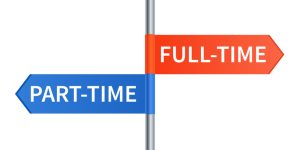Missing Link
We’re sorry, the article you are looking for is no longer available. Below are some Job Seeker related articles or you may use the search.
How to Turn a Seasonal Job into a Full-Time Job
With the holidays approaching, do you find yourself needing more income? If so, then a seasonal job may…
Real Support from Real People—Job Search with Express Healthcare
As a professional in the healthcare field, you may find it challenging to search for the right job…
Charting Your Career Path—Career Development Month
The new year is approaching rapidly, and November is Career Development Month—a time to reflect on the past…
Making the Most Out of a Professional Certification
In today’s competitive job market, it’s imperative to stand out from the crowd. One effective approach is obtaining…
AI for Your Job Search: The Ultimate Guide to Outshining the Competition
AI has become a valuable tool for job seekers, providing more support than ever. AI can aid individuals…
Your Guide to a Successful Civilian Career Transition
Transitioning from military service to a civilian job can be a substantial challenge for veterans, and it’s completely…
Relocation Made Simple: 5 Steps to Job Searching
Finding a job when relocating to a new area can feel overwhelming, no matter the reason behind the…
Job Market Trends and Insights to Fuel Your Career
The Job Seeker Report is based on the results of an online survey conducted by The Harris Poll…
Your Guide to Benefits from Express Healthcare Staffing
Benefits are an important consideration when weighing a job opportunity. At Express Healthcare Staffing, we’re committed to providing…
Want to Climb the Corporate Ladder? Here’s How to Get Noticed
Most people don’t want to climb the corporate ladder. Getting promoted takes hard work, time, connections, and a…
Resources for Employees with Disabilities in the US and Canada
Life can change in an instant. A disability, whether through injury, illness, or a chronic condition, can affect…
Nominate an Extraordinary Nurse for The DAISY Award
Recognition is vital to retention, productivity, and employee happiness. The DAISY Award® is a unique, international recognition given to…








